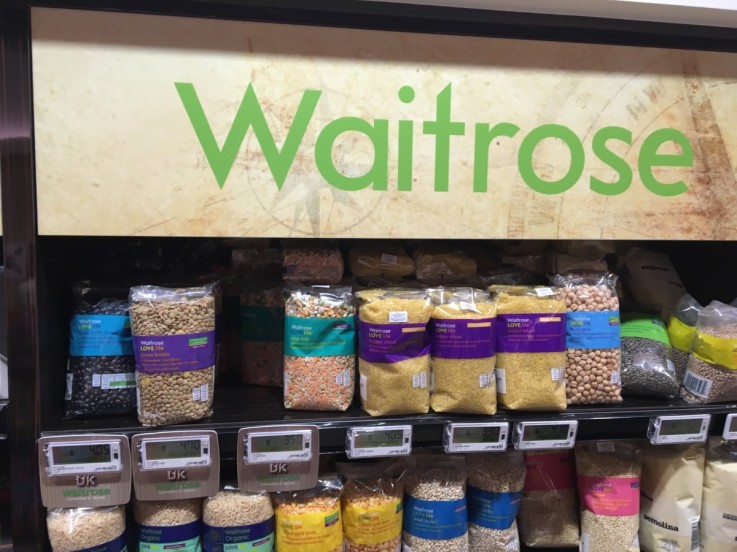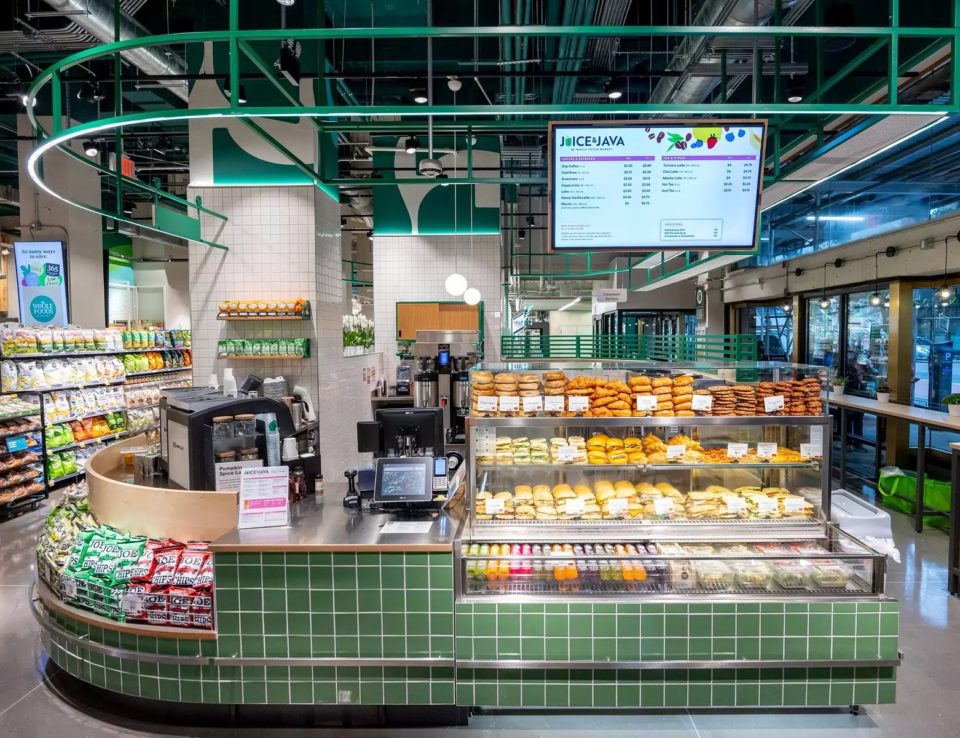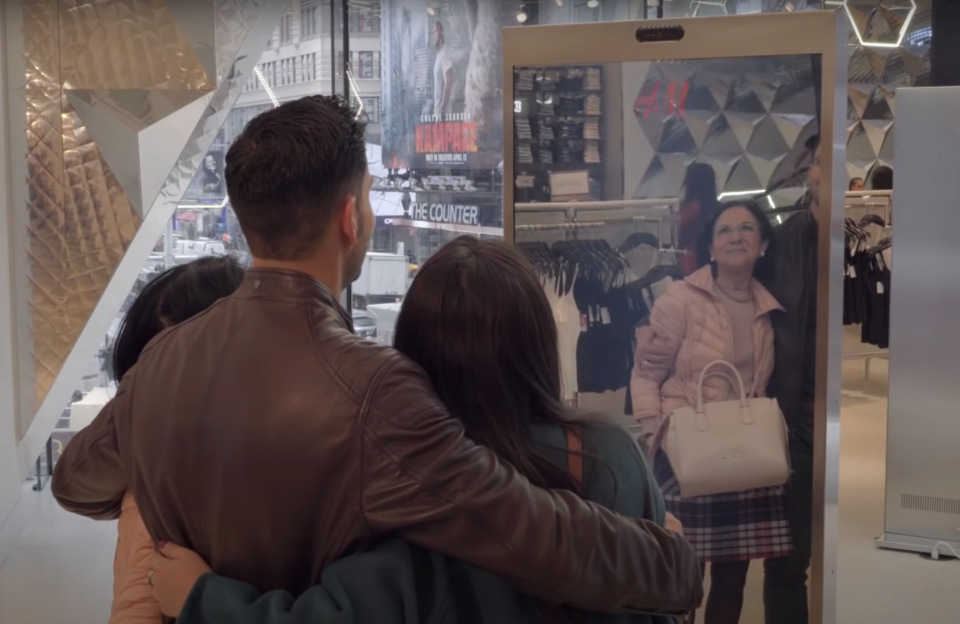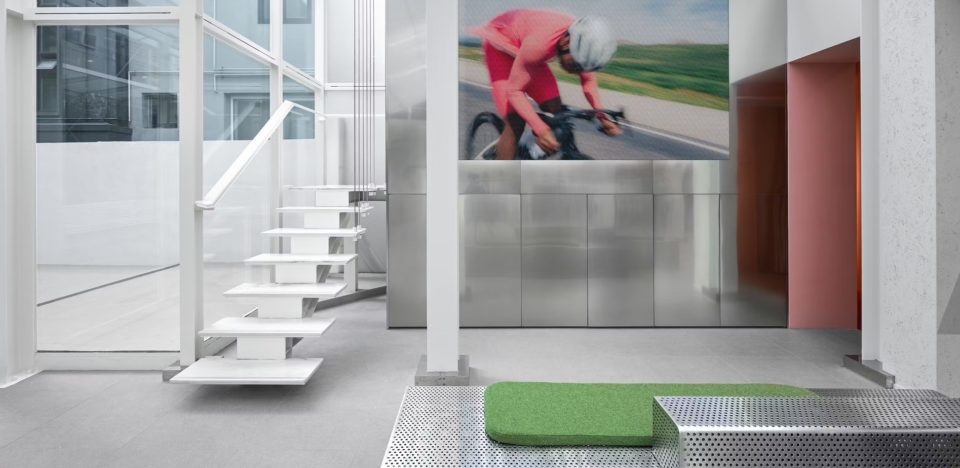Insights by Dagmara Lacka of Boldmind on the potential of Big Data and the Internet of Things
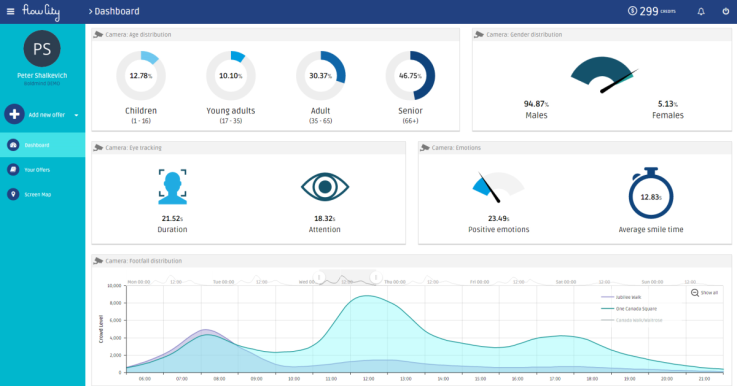
Described as “an Internet of Things company delivering smart city solutions”, Boldmind tailors strategies for organisations looking to unlock the wealth of data generated in the city between humans and their machines. Harnessing the potential of big data and the Internet of Things to drive impressive business growth, we talked to Dagmara Lacka, CEO and Founder of Boldmind, to find out more.
Could you explain what Boldmind do?
We are big data company who focus on analysis and extraction of data that essentially helps retail businesses make better decisions. It’s DDD, or Data Driven Decision making. This is what our company is all about and it’s been set up by people from the advertising industry, retail industry but also analysts at investment banks who were looking at retail specifically. The mix of skills allows us to guide our clients and help them look at what data they’ve got, what data they should be collecting and how it can sell their operation.
To visualise that data in a friendly way to merchandising managers or marketing directors, we’ve developed a software. We also took that a step further to allow them to act on that data in real time. For example, we’ll send the signal to a marketing manager that 60% of stores enjoy sunshine. If it’s an optical store, then this would be the right moment to change the digital window into sunglasses versus prescription glasses for example. That can be pre-set or it could be acted on. We allow retailers to decide what data we are going to collect for them and then based on that data the software can make some out-of-market decisions. Once they find ways that work for them, they can automate that process.
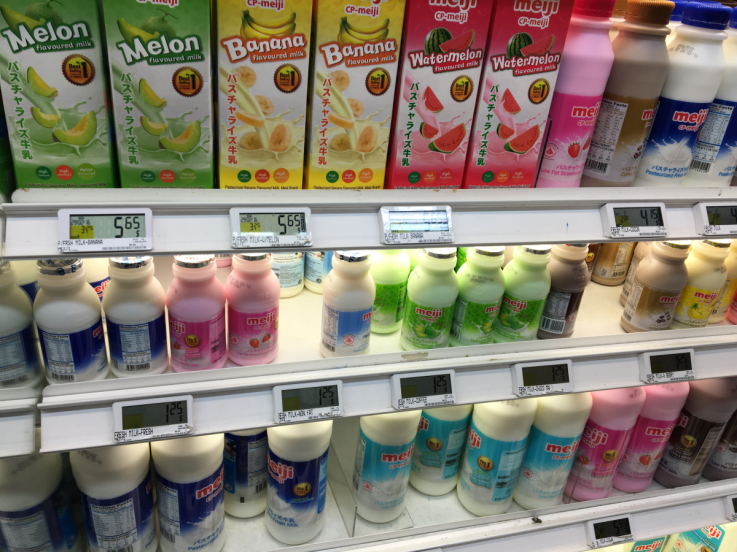
Using Boldmind’s software flow.city these smart price tags can be adjusted according to the weather, events or stock levels making surge marketing and surge pricing possible in-store
What is the most innovative current uses of the system in terms of live case studies?
The most innovative, in my opinion, is the ability to use various data-sets and disperse them in the hyperlocal context to drive flash sales. So look for the one hour windows and determine the discount. This is a system for a multi-retailer and will allow you to pick out individual stores, look at the hyperlocal data around that store, and suggest the best possible discounts.
In today’s world the sales are 10%, 20% or 50%. But maybe it should be 32% to really motivate the stock to shift. If you pair it up with digital windows, sales can now happen for just a few hours and bring the store back to full price for the afternoon or evening trade.
We are looking to determine whether the product will sell, how much of it will sell and at what price. In order to determine that we need to look at the flow of crowds and understand what kind of shoppers are passing by or passing through. If you think about it, this is a perfect application for a busy transport network. One of our clients is Canary Wharf Group and it is a perfect testing lab for us because we’ve got a big concentration of people who leave the office at the same time and they will walk to the station because most office professionals at Canary Wharf take the underground home.
We can look at how we can incentivise them to alter their travel plans. We did an experiment where we discovered that just informing people that the trains are crowded and it will most likely last for next 55 minutes, will motivate people to work a little bit longer, go and do some shopping or have a drink. It worked really well. However, when we presented it to Transport for London, they said it was a PR disaster waiting to happen. They could already see the headlines of newspapers saying that TFL is encouraging people to go and have a drink instead of going home. So, although they said this could alleviate some of their overcrowding problems on the Jubilee Line, they could not be seen to sponsor such products.
Another application of the software is within the hospitality context. So if you’ve just arrived at a hotel and you’ve checked in, you’re coming down the lift and you think, “Where shall I have something to eat?” or, “Can I have my nails done?” This is the sort of information that hotels should be providing.
And to submit that data do the restaurants, for example, have to give you that information?
We wouldn’t collect the crowd levels of a restaurant without their permission. We can collect that data in a few ways, but we need quite significant consent from a restaurant owner. If the restaurant has not received enough bookings, this is the time where their offer would display, let’s say, in the hotel room or in the lifts or in the lobby. Again, our software allows them to do this. There is a user interface where up to 1,000 creative artworks can be stored and they can have different rules. There is a rule based scheduler that automatically publishes the current artworks based on situations within the business.
This is what we’ve done with Everyman Cinema, a new concept upmarket cinema that serves food. They are one of those new businesses whose booking system is geared up to take full advantage of our software because all of their movies are pre-booked online. In other words, they know how many people will come to each of the showings so they can react one hour before the movie to make sure the cinema is filled. It can also determine whether offering 2 for 1 is right for this time of day. For them our software has delivered incredible results. They’ve seen 45% at least in attendance for the screening that was being advertised. Again, it’s pure brand communication.
So let’s say it’s two hours before the showing, how do they actually get customers to see their messages?
First and foremost, we set out to democratise outdoor advertising. What we find slightly unfair is that any new retail business setting up today does not get access to the best outdoor space in London. I know the UK is not just London, but London is one of those fantastic markets where loads of the retail brands start. So if you look at underground advertising, that’s very effective. Lots of start-ups when they raise their first few millions will spend a lot of money on advertising on the tube because it works. However, there are very high minimum orders for those and you need to plan in advance.
We are proposing to flip the whole model upside down. Whenever there is space available, it will be made available to anybody on an hourly basis who’s using our platform. So we work with major media owners to persuade them to do that. For example, in Canary Wharf 50 screens managed by a boutique media owner were made available to retailers during the trial.
So that’s one of the channels that Everyman Cinema could communicate. We would give them access to screens in the mall. We’d say, ‘your screening is in one hour. You have sold only 1/3 of the seats. Would you like us to show the offer now?’ There were no discounts involved, it was just communicating that the movie is now showing. In most cases that was enough to redirect people and go to Everyman Cinema. So the digital screen is one but we also look at apps who enjoy high engagement. Apps like Citymapper or news reading apps. We have integrated with one of the UK publishers, Trinity Mirror, and two million of their app users were made available to a retailer.
So whether you are Boots or whether you are a small patisserie just starting and you want to make sure that you shift your stock, you get access to the same media channels. That’s our proposition.
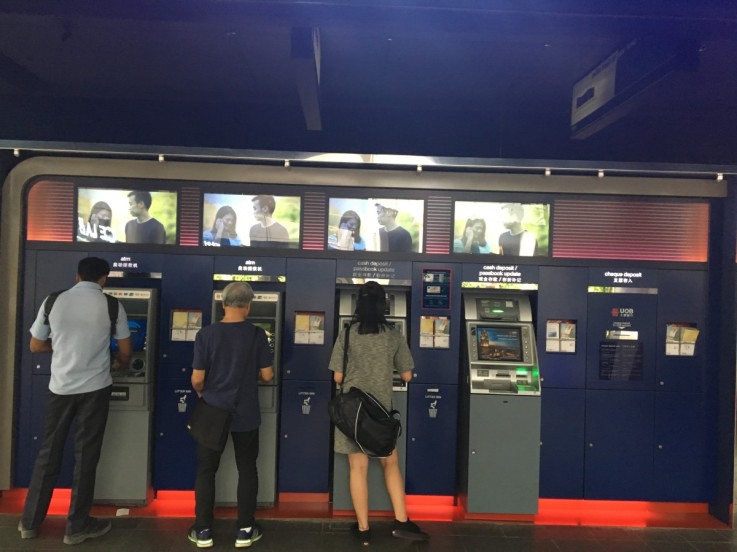
Big data is completely reinventing retail faster and faster. With this in mind, how much smarter do you think big data systems are going to be, or your system is going to become, in 2020?
We don’t think it will re-invent the in-store, but we believe in-store and physical retail has secured its space. I think the biggest impact will happen at head office level. If you think about it, we are essentially the brain ready to fetch the information. So we are currently like a three-year-old experiencing the new world and everything is really interesting and there are loads of applications. But it will mature with the amount of data and information it will get. We are employing artificial intelligence and the key to artificial intelligence is getting smarter.
So in 2020, we will have a smart system for retail which will improve itself continuously. It will be able to analyse the competition, see what the competition is doing and what their products are. As the line blurs, we will get more and more data on what is available in each store and what the new trends are, and it will help retailers with buying process, stocking level, pricing, staffing, and in-store communication. Then all of that can plug into a CRM or client relationship management system.
And do you think head office is going to look slightly different in this in 2020?
Absolutely. I believe that head offices of retail brands will look at financial markets or the talent that was trained in financial markets. It will look at expanding their analysis departments.
If you look at the previous decade, we had a lot of marketing and creative talent going into retail. Those brands that embrace this creative vision have won because there was a huge investment in the in-store customer experience. I think that’s fantastic and that will continue to grow and the technology is there to help make this happen. But I think those themes are well equipped to expand on what they’re currently doing really well. One of the obvious examples is Burberry or Apple. I think the merchandisers and marketers will go this way and they will make their in-store online experience even more seamless.
Can you imagine your systems using facial recognition and tailoring the display to the person walking towards it?
Yes, I can imagine this. In fact we’ve got a proof of concept in our office, in our demo space that already does that. It also reads emotions. So not only can we show content that is appropriate for a girl, we can also determine whether she likes it and, after 10 seconds is up, which part of it she likes. From an ethical point of view, I believe this is not the role of a billboard. I think a billboard is a way for a city to communicate with the general public, not with a specific individual. I think there are enough tools to allow us to do that and those are apps, and online and email marketing. Having said that, there are in-store solutions that could use that.
Do you think it could be assigned to a group? If, in a particular moment, a store could see that there are more teenage girls in the store could they then use that on mass to vaguely tailor the screens in that store?
Of course, and again it’s possible today. But we believe that where the big data comes into play will allow retailers to actually predict at that particular time. The group of young girls will be in a particular section so they can almost prepare the settings for them to come in and actually invite them to come in before they do. We see big data application in the predictive analytics. Again, I’m cautious of how people will react. Most people will not mind, especially millennials, as they are used to openly sharing everything about themselves on Facebook and Snapchat. However, I think the majority of the population still might feel that they don’t want to be tracked.
How are you planning on developing your systems? Or how do you think they will evolve and develop going forward?
We are currently focusing on outdoor advertising and we are now working on in-store solutions. Our biggest challenge at the moment is that each sensor runs on different software, but we are looking at solutions. One of the things we are very excited about are the smart security tags which will allow us to measure the interaction of customers with a product. If you think about a handbag that has a security tag, we can’t measure whether this bag has been picked up, tried on or taken to a fitting room. We’ll be able to sense information and report to head office saying that there is a problem with the basket abandonment in that part of the day. We would like to embed those into reusable security tags. So from the retailer’s perspective, it’s just an upgraded security tag.
Can you envisage a point where customers might interact with that tag via their phones?
Yes. Again we would want that to be absolutely seamless. So if this is your customer, they’ve got your app and have interacted with that product, they can then go to their phone and see all the products they’ve interacted with. I don’t believe shopping is about having your phone out and scanning things. I think we like the way we shop and technology shouldn’t interfere with that. I think it should align itself and cause as little invasion as possible. I see the opportunity of a shopper being able to take that product and place it in front of the mirror, which will then second as a screen and display the content of that handbag. So you don’t have to take out your smartphone or have any app, but the information about the product could be displayed on the screens or mirrors within the store.
Who are your favourite, most innovative retailers at the moment?
It would have to be Burberry. I think their stores are real destination stores similar to Louis Vuitton, who have not employed any technology. With the smart changing rooms and the VIP customers having their body scanned, they are one of the most exciting ones. With the use of screens and sensors and technology in-store, I think Burberry definitely leads the way.
I’m also excited about Topshop. I don’t know what they are planning for their flagship stores but they are definitely on the way to becoming the young Selfridges for the millennials. I love what they are doing with the pop-up stores and how the store is different every time I go into it. They are way beyond fashion, and a curator of new hip young brands. So like I say, it’s not just about technology.
Another one I’d like to mention is Itsu. One of my observations is that they are very agile and very keen to try anything. There are two types of brands or two types of retail companies. One that will try something once it’s proven and others that want to be the first ones to try it and if it works, they were the first ones and if it doesn’t, so what. Itsu is one of those because their whole marketing team comes from e-commerce. Itsu is a sushi chain, but operates like an online retailer.
When we look at retail in general, I’m really excited about the future of the shopping mall and the future of the British high street. There are technologies that allow you to run a shop digitally with interactive projectors. What this means is that a new brand or a pop up store can take a high street store for one week or a few months. But it also allows the same property to be used for different purposes in the morning versus afternoon or night time.
The last point is that I really think we should begin giving up leafleting and looking at other ways to inform people. I think leaflets are wrong on so many levels. Both for the people that need to stand on the street and give them away, and for the people that don’t want to take it and then the litter it produces. Leafleting is bad, and I can’t wait for it to disappear.
Images courtesy of Dagmara Lacka
To experience the very best of London’s retail for yourself, book one of our Insider Trends retail safaris. Find out how they can benefit your business here.

